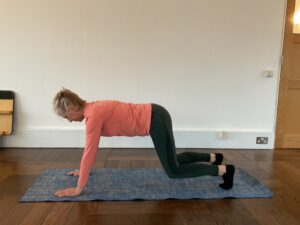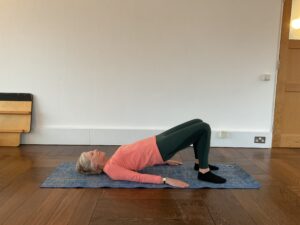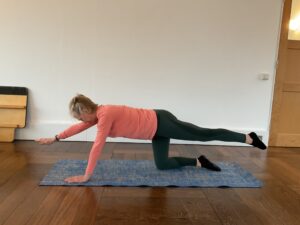Written by Ella MacDonald Physiotherapist and APPI reformer teacher.
We are living for longer, which is a great outcome of modern medicine. However, how many of these years are healthy years?
The Facts
Data from 2018 – 2020 shows that men and women in England are expected to live until 79 and 81 years respectively. However, only 63 of these years are expected to be healthy for both genders. (1)
Unfortunately, this mean we can currently expect 20 unhealthy and unhappy years at the end of our life.
This is a miserable fact, considering all the incredible advancements in health and medicine to date. Hopefully it strikes the question, how can we change this?
The most defining factor of unhealthy years is being physically inactive (2). Among an extensive list, this is arguably the most changeable characteristic of unhealthy years.
One last statistic is that currently, only 17% of men, and 14% of women, over the age of 65, reach their weekly physical activity recommendations in the UK.
The Solution
Hopefully a recipe for more healthy years is starting to become fairly clear. Adults over the age of 65 must become significantly more physically active.
The current guidelines for adults over the age of 65 are 150 minutes of moderate exercise, as well as 2 strength training sessions every week.
The key ingredient, missing in most, is strength. It is well documented that across our lifespan, all the tissue in our body requires sufficient stress to remain strong and healthy. The truth is our bodies respond well to the appropriate amount of stress, and in fact require it, to tolerate the demands of our lives. And this fact does not change, no matter the age bracket we fall under.
The key is understanding what the appropriate amount of stress is for your body, each day.
Use it or Lose it
As we age, we fall under the impression that we need to protect our body and avoid stress to remain safe.
However, after the age of 65, our muscles slowly become smaller. The importance for strenuous exercise therefore grows exponentially after the age of 65. It is when the phrase ‘Use it or Lose it’ could not be more relevant.
On a positive note, those bodies over the age of 65 have had a wealth of experiences, so in many ways they are stronger! Every time you may have experienced pain, injury, inflammation or illness your body repaired itself a little bit stronger than before. You are equipped with memories and movements that mean you understand your body far better than your children and grand children.
So it’s not all doom and gloom for strength and age.
What can a Strength Session look like?
Strength training can be intimidating to most, however, it doesn’t have to be. The beauty of our bodies is the endless ways in which we can move and challenge them for greater strength and health. We know we can achieve the parameters of strength training at any age. We also know that your muscles, joints and bones can become stronger no matter what age you are.
You build strength by challenging the part of your body you are exercising. If you want stronger arms, you work your arms harder, if you want stronger legs, work your legs harder.
We understand this becomes less simple over time. Things start to hurt, your body becomes less reliable and you may not remember the last time you were able to move in the ways that made you happy. However, with a bit of creativity, we do strongly believe that despite these barriers we can find ways to strengthen each part of your body in a safe way. A fantastic place to start is with Pilates.
Pilates for More Healthy Years
Pilates offers a union of challenge and safety. Under the correct guidance, Pilates can safely and effectively load our muscles, bones and joints to create strength. By relying on your body weight and body awareness, Pilates offers a thorough solution to the barriers adults over the age of 65 face in meeting their physical activity recommendations.
Here are some examples of fantastic exercises your physiotherapist may suggest to try at home. These exercises can be made more challenging for your strength, or more gentle if you’re just starting out.
Leg pull in prone prep
Aims: To strengthen your abdominal and pelvic floor muscles while training stability of the pelvis and shoulder girdle areas.
Start: Kneeling facing the mat, hands slightly forwards of shoulders, knees under hips, toes tucked. Back elongated flat like a tabletop and abdominals drawing inwards.
Movement: Gently press through hands and balls of your feet, to lift your knees from the mat. Keep your back elongated like a tabletop. Hold for a breath. And then slowly lower knees to the mat. Repeat 8 – 10 times.

Shoulder bridge
Aims: To strengthen the gluteal and hamstring muscles while training stability of the pelvis. To also mobilise the back.
Start: Lying on your back. Feet and knees hip distance apart. Arms long by sides. No head cushion.
Movement: Roll your lower back into the mat and scoop your tailbone upwards. Continue as comfortable to peel your back away from the mat as far as your shoulder blades or to a point which feels right for you. Pause for a breath at the top of your movement. Then roll back to the mat bone by bone until you return to your starting position. Repeat 6 – 8 times.

Swimming level 4
Aims: To strengthen the abdominal and pelvic floor muscles while training stability of the pelvis and shoulder girdle areas.
Start: Kneeling facing the mat, hands slightly forwards of shoulders, knees under hips. Back elongated flat like a tabletop.
Movement: Reach your right arm and left leg long away from your body and mat. Keep your back elongated like a tabletop. Then replace your hand and leg to the mat. Repeat 8 – 10 times alternating sides.

Where to Start?
So let’s start gaining back your healthy years with Pilates. At APPI we recommend starting with a 1 to 1 assessment with a physiotherapist to help you understand your body and equip you with a base of exercises that are appropriate and safe for you.
The next step is consistency and gradual progression. We recommend starting with either a 1 to 1 session or one regular group class a week where you can be challenged safely under the guidance of a physiotherapist or Pilates instructor.
At APPI, we are introducing an Active Ageing Pilates Reformer class. We want our classes to be accessible to all, whilst remaining safe and effective. If you are not reaching your physical activity recommendations due to pain, lack of trust in your body or fear of further injury or pain, we hope this class provides an opportunity to overcome these barriers.
The most important take away is it’s never too late to start. Our bodies strengthen when loaded correctly at any age.
Please get in touch with us if you have any questions about Active Ageing or would like to get involved in our class. We look forward to joining you for a few extra healthy years!
References:
- Moreno-Agostino, D., Daskalopoulou, C., Wu, YT. et al. The impact of physical activity on healthy ageing trajectories: evidence from eight cohort studies. Int J Behav Nutr Phys Act 17, 92 (2020). https://doi.org/10.1186/s12966-020-00995-8
- What is happening to life expectancy in England?, 10 August 2022, Veena Raleigh, https://www.kingsfund.org.uk/publications/
- Understanding the drivers of healthy life expectancy: report, 1/06/2023, Research and Analysis.
- Health Survey for England, 2021 part 2. Official statistics, National statistics, Survey, 16 May 2023

